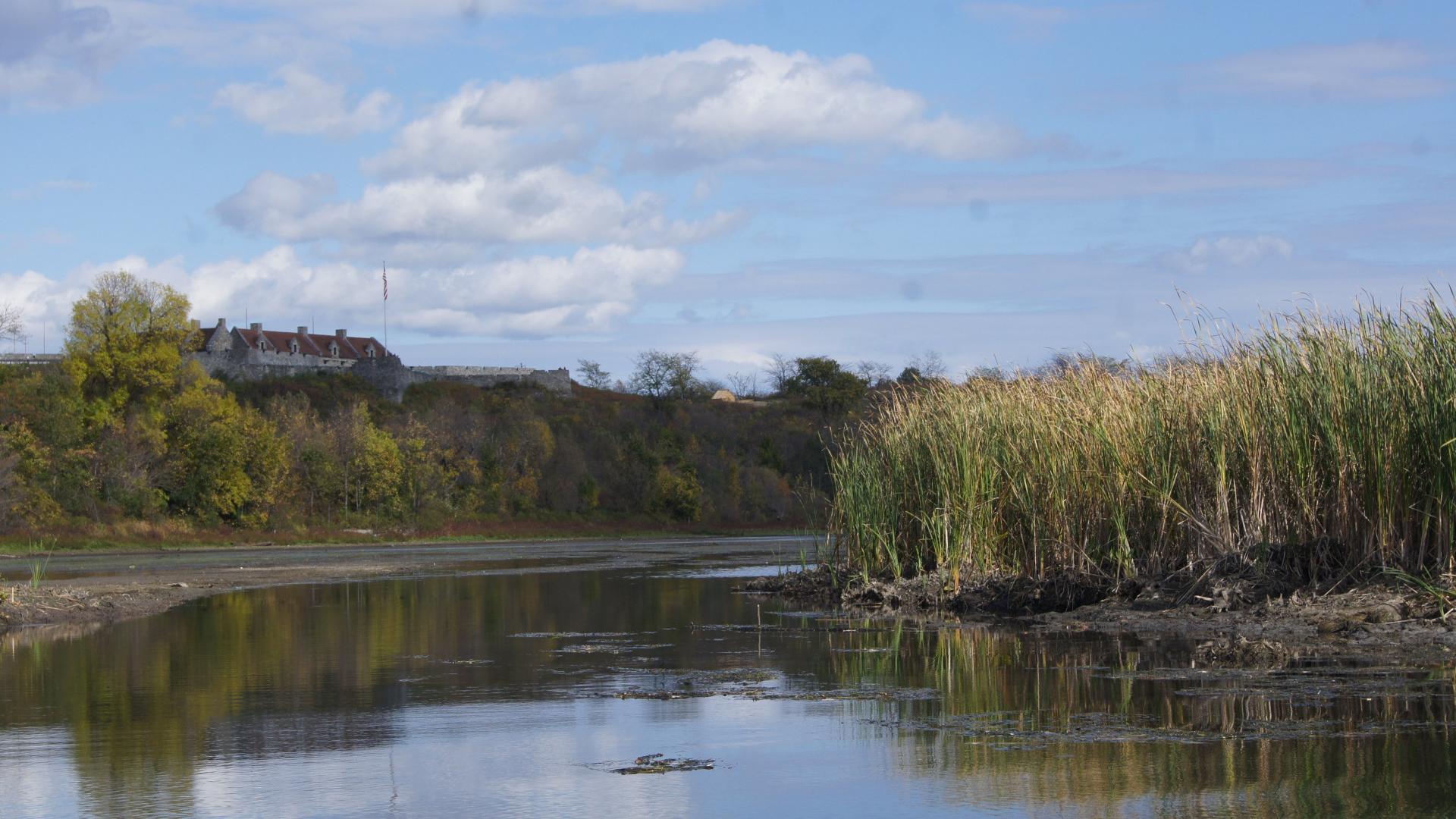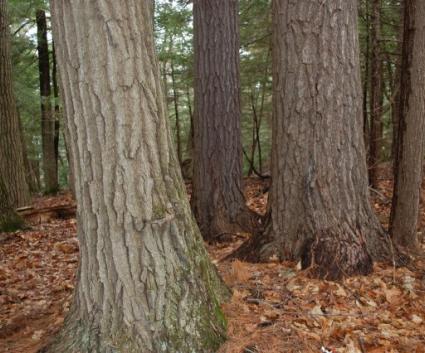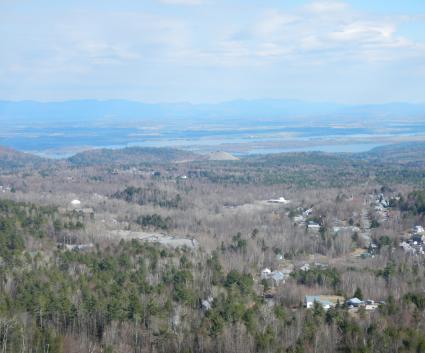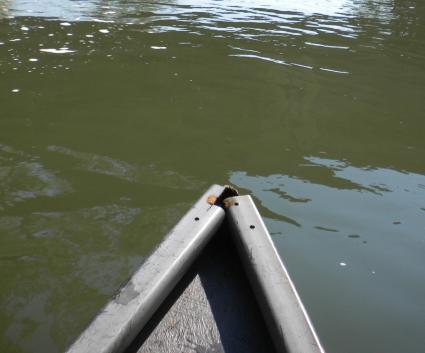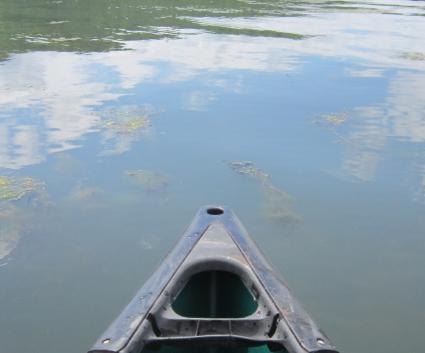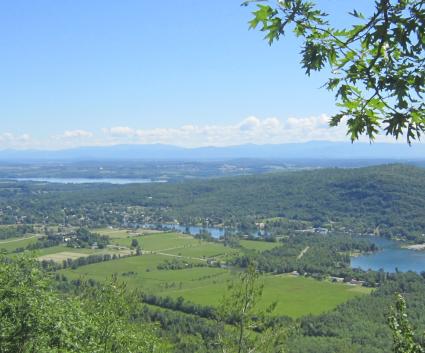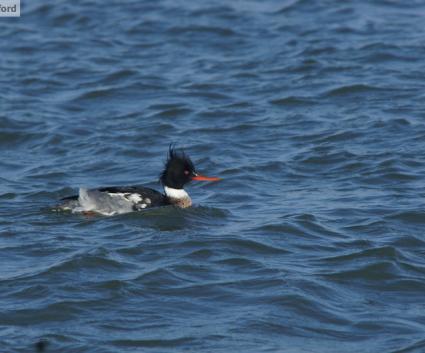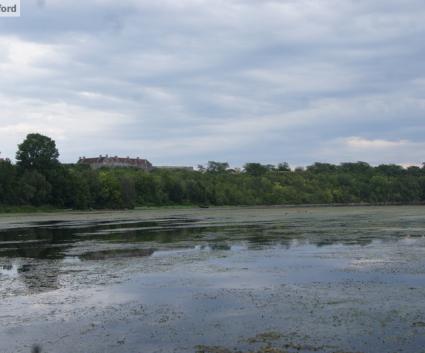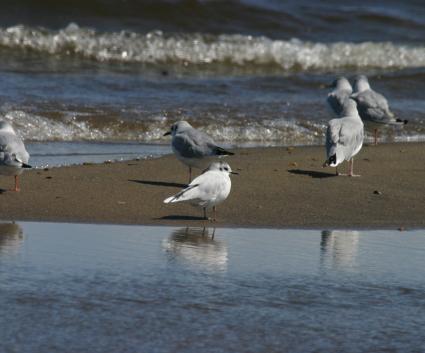Putting in on the LaChute River
Wren and I completed a camping trip this past October with a paddle into Ticonderoga Marsh, a beautiful stretch of cattails and mucky edges formed where the LaChute River flows into Lake Champlain. There are two chief ways to access the marsh. The first is to put in at the boat launch near the Ticonderoga Ferry and head south. The second is to use the small boat launch at the Town of Ticonderoga Recreational Park and head out the LaChute. I chose the latter since it is more secluded and I figured there would be more motor traffic on the lake on the weekend.
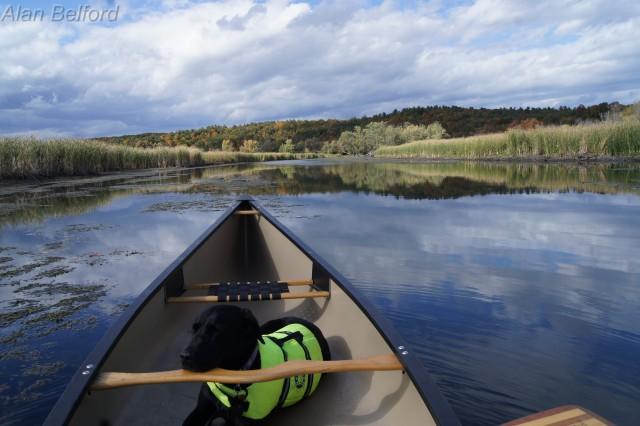
Anyone who paddles the LaChute should know that it is not a secluded wilderness Adirondack paddle like so many others in the region, as you ease your boat beneath a few bridges and roadways. That said, it is a quiet paddle and Wren and I meandered peacefully past the willows, silver maples, and cottonwoods which line the river. I kept hearing the splashes of turtles dropping - plunk! - into the water from the many logs and downed trees along the banks. But I didn’t see the turtles. I must not have been looking far enough ahead of us - or they were particularly skittish.
Finding Large Flocks of Ducks
It doesn’t take long for the LaChute to leave town and feel a lot wilder. The landscape became wooded and on our left steep slopes carried trees above our heads towards Fort Ticonderoga. I soon saw flocks of ducks taking off the water at our approach, most of which were Wood Ducks. In one flock there had to be about 50 birds. Like the turtles, they too were resting in places on the downed logs and on more than one occasion after I thought that they had all flown, two more would shoot out from some unseen perch.

We soon reached the edge of the cattails of the marsh and the trees parted way to allow the sun to dominate the sky overhead. The muddy edges of the river and marsh are good in the late summer for migrating shorebirds and I noted three lingering Greater Yellowlegs as we passed a long, thin strip of mud. Most of the ducks from the river had landed in a large, shallow cove formed by the marsh and the railroad bed, and I began to poke our bow through the muck to get a closer look with my binoculars – being sure we didn’t find ourselves stuck with a tough, sloppy, and slurpy walk back out! In such situations my paddle serves more as a pole for pushing on the bottom of the water than for actually paddling the water. I tried to stay in the deepest water possible as I pushed along, and we stopped to watch a Great Egret wading along the edge of the cove.
I was debating how far to tempt a mucky fate when I heard the sound of a train coming north. I stopped and waited, sure it would flush the ducks in the back corner up into the air, making them easier to see. It did. As the train whistled its approach and came whizzing past, the entire flock went skyward, and a few hundred birds banked and wheeled against the clouds. I could make out five species. Wood Ducks were the most prevalent, but there were also large numbers of Green-winged Teal, as well as a number each of Blue-winged Teal, American Black Duck, and of course, Mallard. They landed in scattered clusters and I checked to see if I had missed anything in the flock. Satisfied that I had not – at least of the ducks I could still see – I reversed and we sought deeper water that didn’t threaten to strand us.
A Magnificent View of Fort Ticonderoga and Mount Defiance
Beyond the railroad bridge the marsh opened up even more as Mount Defiance sat frowning upon it from above and Fort Ticonderoga sat prominently on its perch in the sun. I eased through a small channel in the cattails to get a better view of the fort and we could hear one of their interpreters explaining the loading and firing of a Revolutionary musket. “It might get loud soon,” I warned Wren who after watching a few ducks had settled comfortably in the warm sun for a nap. She hates the sound of guns, fireworks, and thunder – anything loud and banging – and I drew us back away from the fort hoping increased distance might make it easier on her.
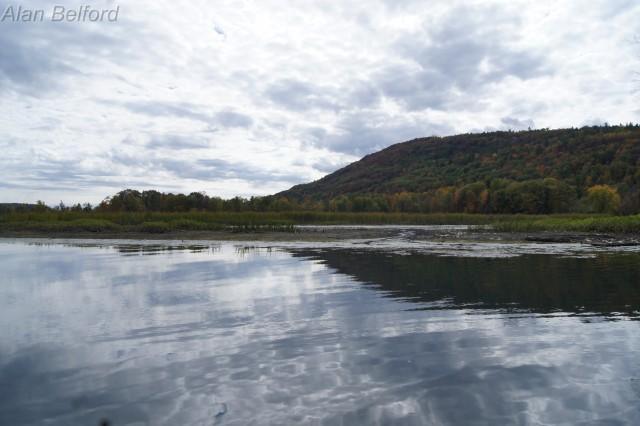
We paddled through the wide channel lined with 5 foot high cattails which created a walled chute and blocked much of the view beyond them when we paddled close to their edge. A few Great Blue Herons hunted along the shoreline and a Bald Eagle flew overhead where the river mouth kissed Lake Champlain. Suddenly, Bang! – the weapon demonstration had culminated and Wren sat up disturbed from her repose as the explosion raced from the fort to Mount Defiance and then back over our heads. A short time later – Bang! – it happened again. Wren wasn’t keen on this disruption of her nap, as the echo ricocheted above us in fantastic fashion. I paddled as far as the river mouth and then turned to check out the cattails again and the enormous beaver lodge which sat imposingly along them. Those beavers were living large.
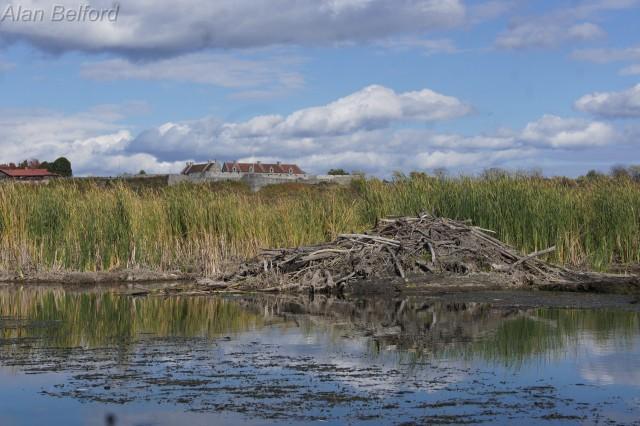
Spotting Common Map Turtles
The current in the LaChute is easy, so I had no trouble working my way back to the car. The ducks were still scattered in broken flocks and we paused to look at a large group of Green-winged Teal and a few Blue-winged Teal which eventually flew up and over us back to the large cove where we had first seen them. Many of the Wood Ducks were again in the wooded stretch of the river and they again raced out at our approach. The turtles too were back on their logs, but this time they didn’t splash as we came. Instead they seemed more interested in the warming sun and I kept my distance so as not to spook them. I was excited because every single turtle I saw was a Common Map Turtle – a species most prevalently found in the Champlain Valley in our region. They sat in small lines on single logs, legs dangling lazily. I was so busy watching them that I didn’t realize we were almost back to the put-in and I completed our trip happy with our finds. Wren, too, was happy - happy to get out of the boat. Sitting still can be a challenge when you are an excitable Labrador retriever.
If you, like Wren, have trouble sitting still, why not get active in the Lake Champlain Region? Paddling, cycling, biking... get outdoors and enjoy all the Adirondack Coast has to offer!
